In the realm of culinary traditions, the essence of a nation’s heritage often lies within the hands of its people and the tools they use in the kitchen. Russia, with its rich tapestry of culinary history, offers a treasure trove of kitchenware that not only reflects the nation’s past but also shapes its future. As we delve into the world of Russian kitchenware, we’ll uncover the importance of these tools in shaping culinary experiences and the evolving landscape of kitchenware distribution in Russia.
Discovering the Heart of Russian Cuisine
In the heart of Russia, where the cold whispers of winter and the vibrant hues of summer paint the landscape, lies a culinary tradition as rich and diverse as the country itself. Russian cuisine is a tapestry woven from the threads of history, climate, and the robust spirit of its people. It’s a journey through flavors that range from the hearty and savory to the sweet and tangy, all grounded in the rustic charm of traditional recipes.
Borscht, a vibrant red soup made from beets, is a staple that warms the soul on chilly days. Its origins trace back to the 14th century, a testament to the longevity of Russian culinary traditions. The soup’s versatility allows for countless variations, each a reflection of the local ingredients and the cook’s creativity.
Kulebiaka, a savory pie filled with fish, potatoes, onions, and cream, is a nod to the country’s vast lakes and rivers. This dish encapsulates the essence of Russian hospitality, as it’s often prepared for special occasions and shared with guests who are welcomed into the warmth of a home.
Caviar, the luxurious black diamonds of the sea, holds a special place in Russian cuisine. It’s not just a delicacy but a symbol of opulence and celebration. The tradition of caviar consumption dates back to the czarist era, where it was a treat reserved for the elite.
The Russian kitchen is also a place of hearty breads and pastries. Pirozhki, small, savory pastries filled with meat or vegetables, are a common sight at picnics and family gatherings. They are a testament to the country’s love for hearty, filling foods that can sustain the cold and the long winters.
Smetana, a sour cream similar to Greek yogurt, is a key ingredient in many Russian dishes. It adds a creamy richness that complements the bold flavors of the cuisine. From the creamy topping on blini to the base of a hearty borscht, smetana is a unifying element that brings together the diverse flavors of Russian cooking.
Russian desserts, while not as sweet as those in Western Europe, are no less indulgent. Medovik, a honey cake, is a dense and rich treat that reflects the country’s love for honey, a natural sweetener that has been used for centuries. The cake’s layers are filled with a sweet, buttery cream, creating a dessert that is both comforting and indulgent.
The country’s vast geography means that regional specialties abound. In the west, you’ll find dishes like pelmeni, small dumplings filled with meat, which are a nod to the nomadic Tatars who once roamed the steppes. In the south, the Crimean region offers dishes like shashlik, a flavorful skewered meat dish that’s a staple of summer barbecues.
Russian cuisine is also a reflection of its agricultural heritage. The country’s fertile lands produce a variety of fruits and vegetables that are used in everything from salads to soups. The summer months are a time when fresh produce is at its peak, and the markets are filled with an array of colorful fruits and vegetables that are the backbone of many traditional dishes.
In the kitchen, Russian cooking is a blend of simplicity and sophistication. The emphasis is often on the quality of the ingredients rather than the complexity of the preparation. A simple potato salad, for example, can be elevated by the use of high-quality potatoes and fresh herbs, showcasing the importance of fresh, local produce.
The heart of Russian cuisine is not just in the dishes themselves but in the communal aspect of eating. Meals are often shared with family and friends, a time for storytelling and laughter. The act of cooking and sharing food is a way to connect with the past and honor the traditions that have shaped the country’s culinary identity.
In conclusion, Russian cuisine is a vibrant and varied tapestry that reflects the country’s rich history, diverse landscapes, and the warm, welcoming spirit of its people. From the hearty soups and stews to the sweet and tangy desserts, each dish tells a story of the land and the people who call it home. It’s a cuisine that invites you to sit down, enjoy a meal, and experience the heart of Russia through its flavors.
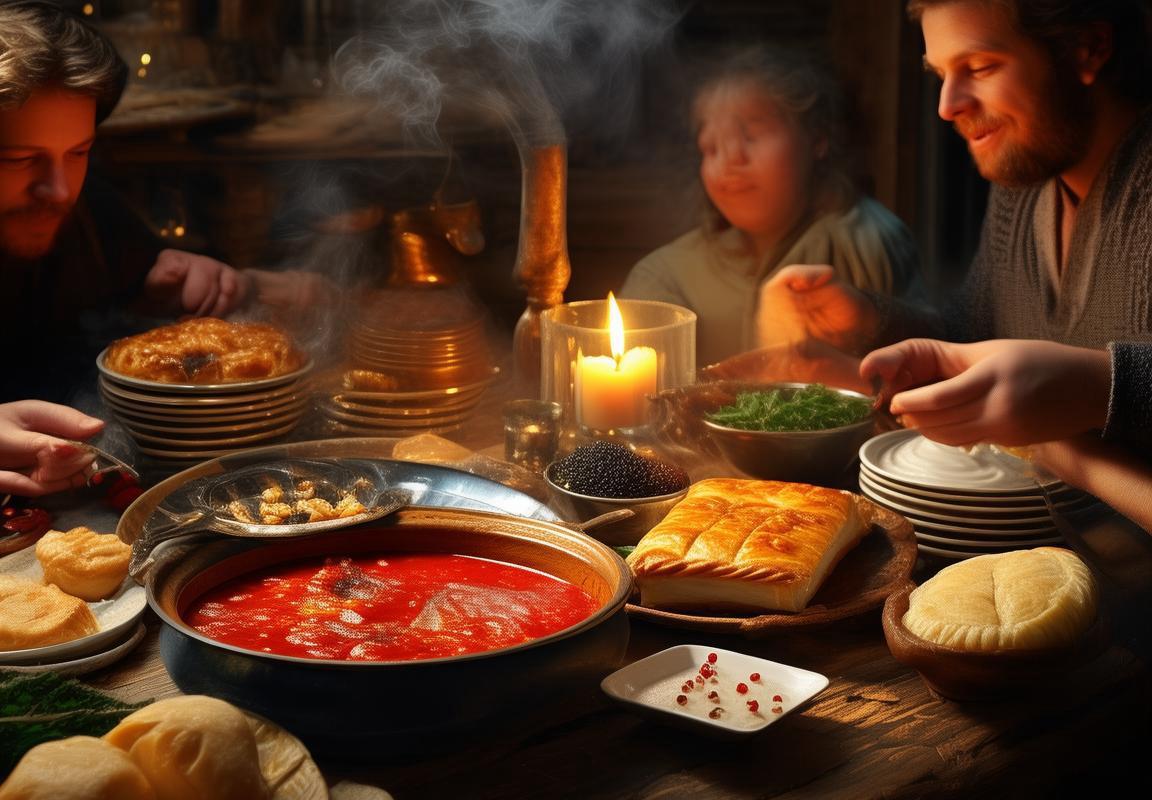
The Role of a Kitchenware Distributor in Russia
In the vast and diverse culinary landscape of Russia, the role of a kitchenware distributor is as crucial as the ingredients themselves. These distributors act as the bridge between the manufacturers and the end consumers, ensuring that every kitchen is equipped with the right tools to create authentic Russian dishes.
They source a wide array of products, from traditional cast iron cookware to modern, sleek appliances, catering to both professional chefs and home cooks. Their selection reflects the rich heritage of Russian cuisine, which is often hearty and rustic, relying on simple, natural ingredients.
One of the primary responsibilities of a kitchenware distributor in Russia is to understand the market’s needs. This means staying abreast of the latest trends while also recognizing the enduring appeal of classic Russian kitchenware. They must navigate the preferences of a population that values practicality, durability, and a touch of nostalgia in their cooking tools.
Distribution networks are meticulously crafted to reach every corner of the vast country. This involves a complex logistics system that can handle the shipping of heavy items like pots and pans, as well as delicate glassware, across Russia’s diverse geography. Distributors often work with a network of local retailers, ensuring that products are readily accessible to consumers in remote areas.
A key aspect of the distributor’s role is quality control. They must ensure that every piece of kitchenware meets the highest standards, as Russian cuisine is deeply tied to the quality of the ingredients and the tools used to prepare them. This means rigorous inspections and a commitment to working with reputable manufacturers who share the same values.
Educational support is another vital function of the kitchenware distributor. They often provide cookbooks, recipe guides, and even workshops to help consumers make the most of their new kitchenware. This not only enhances the customer experience but also contributes to the preservation of traditional Russian cooking techniques.
In the realm of international trade, distributors play a crucial role in exporting Russian kitchenware abroad. They help to showcase the craftsmanship and design aesthetic of Russian products to a global audience, fostering a sense of cultural exchange and appreciation.
Moreover, distributors often serve as consultants for restaurants and catering services looking to establish a Russian culinary identity. They offer advice on the best tools for specific dishes and can even provide custom solutions for high-end establishments that require unique or specialized equipment.
The market dynamics in Russia are also influenced by the distributor’s ability to adapt to changes. This includes fluctuations in raw material prices, shifts in consumer preferences, and the impact of global events on supply chains. Distributors must be agile and strategic in their operations to maintain a steady supply of kitchenware while managing costs and risks.
In the competitive landscape of kitchenware distribution, distributors also focus on branding and marketing. They create awareness about new products, highlight the unique features of Russian kitchenware, and build a strong brand identity that resonates with both domestic and international customers.
Additionally, sustainability is a growing concern in the kitchenware industry. Distributors are increasingly looking for eco-friendly options, such as biodegradable packaging and products made from recycled materials, to align with the values of environmentally conscious consumers.
In conclusion, the role of a kitchenware distributor in Russia is multifaceted. They are not just suppliers of cookware but also cultural ambassadors, educators, and strategic partners in the culinary world. Their work is essential in ensuring that the spirit of Russian cuisine is preserved and celebrated through the tools used to prepare it.
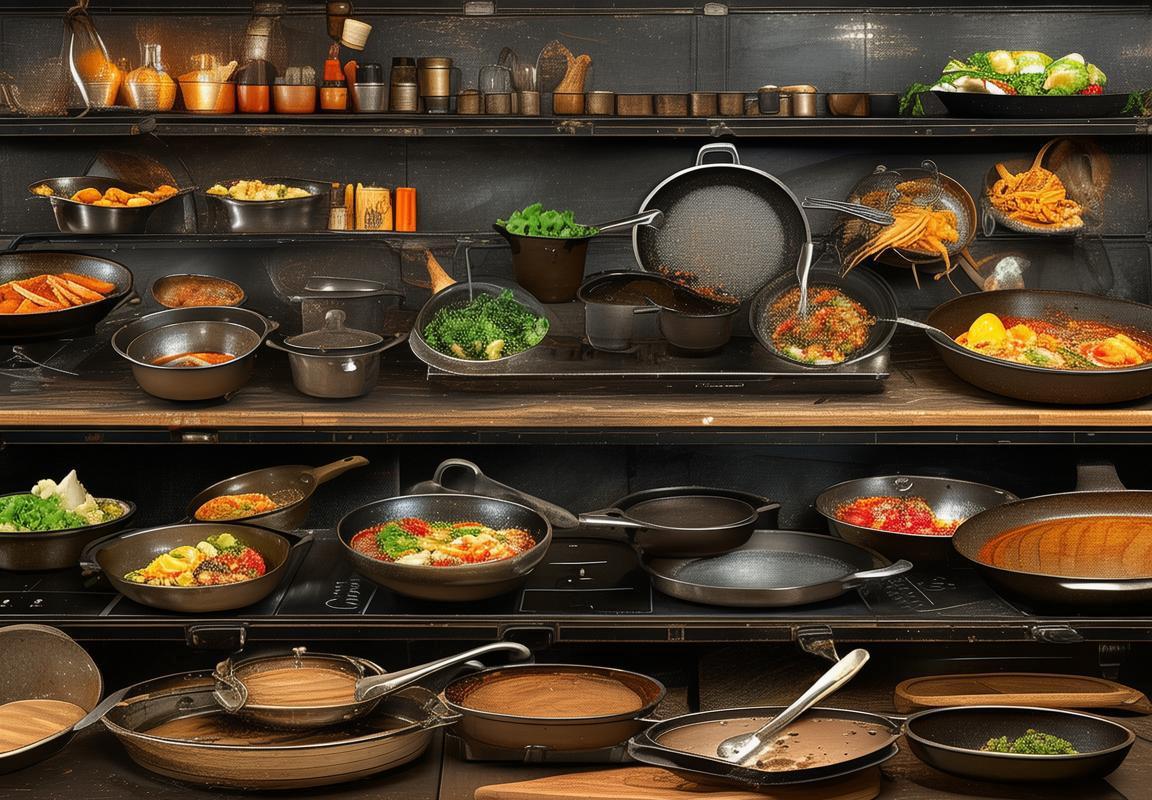
Essential Russian Kitchenware: From Utensils to Dishes
In the heart of Russia’s culinary landscape, kitchenware is more than just tools; it’s a reflection of the nation’s rich heritage and the warmth of its homes. From the rustic charm of wooden spoons to the elegance of porcelain plates, each piece tells a story of tradition and innovation. Let’s delve into the essential items that define the Russian kitchenware collection.
Wooden spoons, often seen in Russian kitchens, are not just for stirring; they are a symbol of durability and a connection to nature. Crafted from local woods, these spoons are cherished for their warmth and are often passed down through generations. They are perfect for cooking soups, stews, and borscht, the hearty beetroot soup that is a staple in Russian cuisine.
Cast iron skillets are another indispensable piece of Russian kitchenware. These heavy pots are used for cooking everything from pancakes to hearty stews. Their ability to retain heat makes them ideal for slow-cooked dishes, and their non-stick surface is achieved through the seasoning process, which involves repeatedly coating the skillet with oil and heat.
The samovar, a traditional Russian tea urn, is a cornerstone of the Russian kitchen. Made of copper or brass, these ornate vessels are not just for brewing tea but are also a centerpiece for gatherings. The ritual of refilling the samovar and serving tea throughout the day is a cultural touchstone, symbolizing hospitality and community.
In the realm of dishes, porcelain and bone china are the stars. Russian porcelain is known for its intricate designs and high quality, often featuring floral patterns and intricate gilding. These delicate pieces are used for serving salads, desserts, and, of course, the iconic Russian tea cakes, called “blini.”
When it comes to everyday serving dishes, earthenware and stoneware are popular choices. These are often handcrafted and glazed with vibrant colors, making them not just functional but also visually appealing. They are perfect for serving soups, porridge, and other hearty dishes that are a staple in Russian cuisine.
Utensils like the “kukhonnaya schotcha,” a large, multipurpose spoon, are essential for cooking. This utensil is used for everything from stirring to serving, and its size and sturdy handle make it ideal for handling large pots and pans. It’s a testament to the efficiency and practicality of Russian kitchenware.
The “mushka,” a small, flat, and round spatula, is perfect for flipping pancakes, blini, and other thin cakes. Its size allows for precision and control, ensuring that each pancake is cooked to perfection. It’s a tool that is deeply rooted in the Russian culinary tradition and is often passed down through families.
In the world of cutlery, Russian knives are renowned for their craftsmanship. These knives are often forged from high-quality steel and feature intricate handles, which can be made from wood, horn, or even mother-of-pearl. They are not just for slicing and dicing; they are also a work of art that reflects the country’s attention to detail.
Glassware also plays a significant role in Russian kitchenware. From the tall, slender vodka glasses to the wide-rimmed tumblers, each piece is designed to enhance the experience of enjoying spirits and beverages. The clarity of the glass allows the colors and aromas of the drinks to be fully appreciated.
The “kalach,” a traditional Russian bread, is often served on a wooden board, which is a practical and aesthetic choice. These boards are often adorned with intricate carvings, depicting scenes from Russian folklore or simply showcasing the beauty of the wood grain.
Lastly, the “prikol,” a small, flat, and round utensil, is used for serving sour cream or yogurt. It’s a simple yet essential tool for adding that tangy touch to soups and salads, a testament to the importance of complementary flavors in Russian cuisine.
In essence, Russian kitchenware is a blend of functionality, tradition, and beauty. Each piece is not just a tool but a vessel that carries the spirit of Russian culture and the warmth of its people. From the rustic charm of wooden spoons to the delicate grace of porcelain plates, these items are much more than kitchenware—they are a part of the fabric of Russian life.
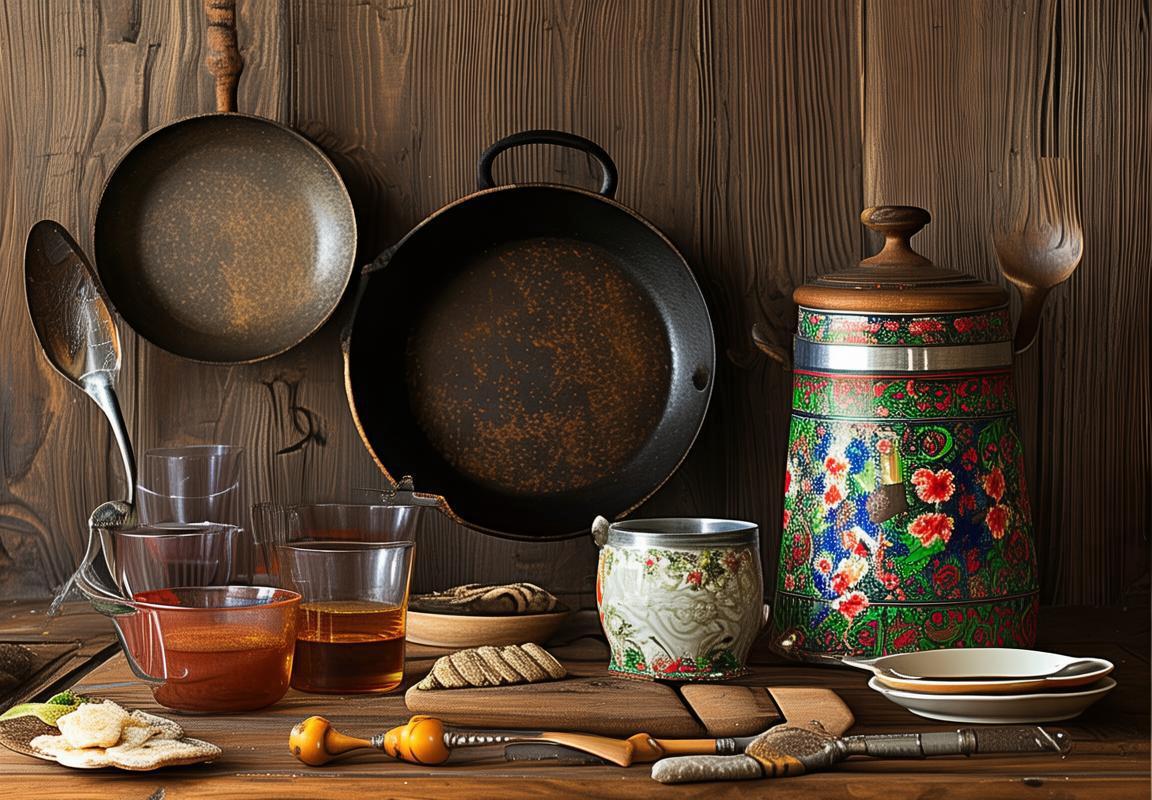
The Distributor’s Network: Reaching Every Corner of Russia
In the vast expanse of Russia, a robust network is the backbone of any successful kitchenware distribution endeavor. This intricate web of suppliers, retailers, and end-users ensures that the essentials of Russian cuisine are not just available but accessible to all. Here’s a closer look at how this network functions across the diverse regions of Russia.
The distribution network starts with a centralized hub, often located in major cities like Moscow or St. Petersburg, where suppliers gather to showcase their products. These hubs serve as the gateway for a wide array of kitchenware, from traditional to modern, catering to both domestic and international markets.
From these hubs, the products are dispatched to regional distribution centers. These centers are strategically placed to serve specific regions, taking into account factors like transportation logistics, climate, and local demand. For instance, a distribution center in Siberia would need to ensure that products are well-packaged to withstand extreme cold temperatures.
The network then extends to a multitude of retail outlets, from small local stores to large departmental chains. These retailers play a crucial role in making kitchenware easily accessible to consumers. They often have a diverse range of products, allowing customers to find everything they need under one roof.
In rural areas, the distribution challenge is more pronounced. Many of these regions are not well-connected by roads, which can make delivery difficult and expensive. Distributors often rely on local transport services, including trucks, vans, and even horses in some remote areas, to reach these far-flung communities.
One of the key aspects of the network is the use of modern logistics systems. GPS tracking, efficient inventory management, and advanced shipping solutions ensure that products are delivered on time and in perfect condition. Distributors also use data analytics to predict demand and optimize their supply chains accordingly.
Another important element is the collaboration with local businesses. Distributors often work with small-scale producers who specialize in traditional Russian kitchenware. This not only supports local economies but also ensures that authentic items are available to consumers who value heritage and craftsmanship.
The network is also adaptable to the unique needs of each region. For example, in regions where pickling is a traditional practice, distributors might prioritize the availability of high-quality jars and lids. Similarly, in areas known for their hearty soups and stews, distributors would focus on ensuring a steady supply of sturdy pots and pans.
Moreover, the network is not just about physical goods; it’s also about knowledge and information. Distributors often provide training sessions for retailers and consumers, teaching them how to use certain kitchenware effectively. This not only enhances the user experience but also helps in maintaining the longevity of the products.
The role of technology cannot be overstated. With the advent of e-commerce, distributors have expanded their reach to include online platforms. This allows customers in remote areas to order kitchenware with just a few clicks, while also providing distributors with valuable insights into consumer preferences.
In times of need, such as during the COVID-19 pandemic, the distribution network has shown its resilience. Distributors quickly adapted to the new norms, ensuring that essential kitchenware could still reach consumers despite lockdowns and travel restrictions.
Lastly, the network is not static; it evolves with the times. As Russia’s economy grows and consumer tastes change, distributors are constantly seeking new products and suppliers to meet these shifting demands. This dynamic nature of the network ensures that it remains a vital link in the chain that brings the spirit of Russian cuisine to every corner of the country.
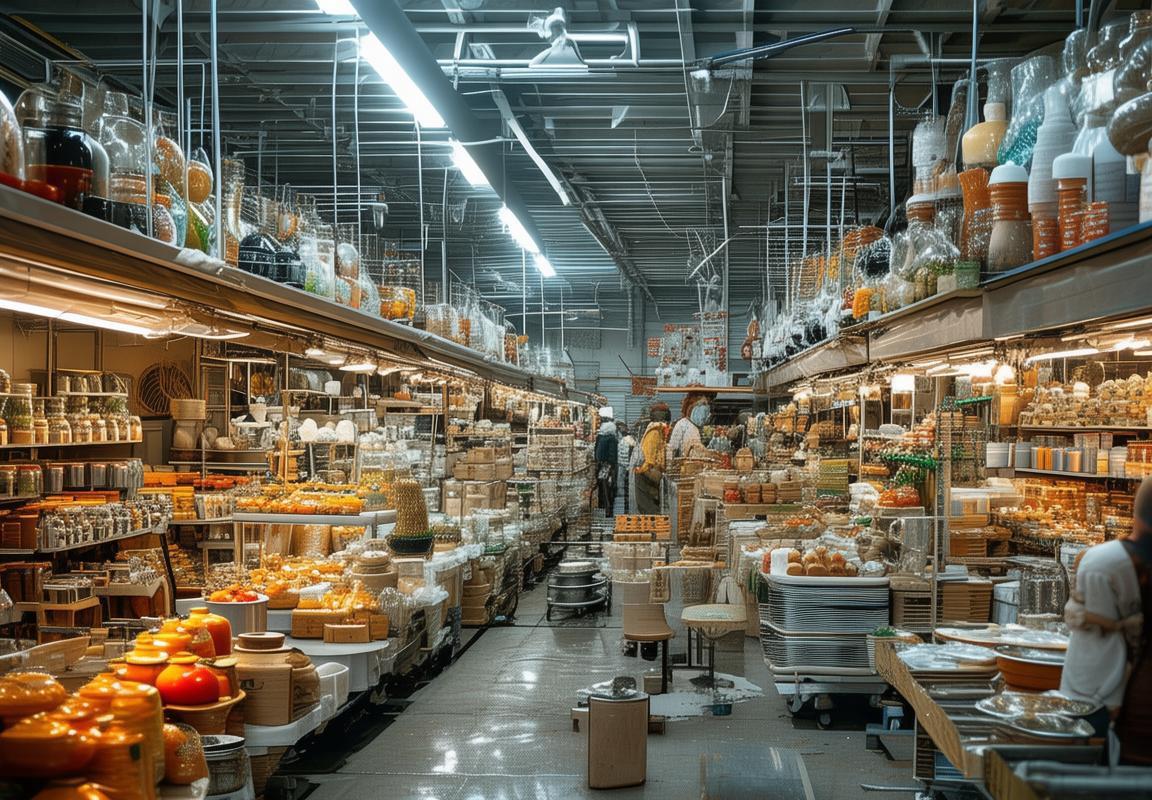
Sourcing Quality: The Distributor’s Commitment to Excellence
In the world of kitchenware distribution, the quest for quality is paramount, and this is particularly true in Russia, where culinary heritage meets modern demand. A reputable kitchenware distributor in Russia understands that sourcing quality products is not just about meeting standards—it’s about upholding them. Here’s how they do it:
The distributor’s meticulous search for quality begins with a deep understanding of the market. They know that Russian kitchens, from bustling urban homes to cozy countryside cottages, require kitchenware that can withstand the rigors of everyday use. This understanding leads them to source from manufacturers who share their dedication to durability and craftsmanship.
To ensure that the kitchenware meets the highest standards, distributors often establish long-term relationships with suppliers. These partnerships are built on trust and a mutual respect for quality. By working closely with manufacturers, the distributor can influence the production process, from the selection of materials to the final quality control checks.
The choice of materials is critical. High-quality kitchenware is often crafted from stainless steel, ceramic, and glass—materials that are not only durable but also aesthetically pleasing. The distributor carefully evaluates the thickness of steel, the glaze on ceramics, and the clarity of glass to ensure that each piece is not just functional but also a pleasure to use.
Another key aspect of sourcing quality is the design. Russian kitchenware distributors recognize that form follows function, and they seek out products that are both beautiful and practical. Whether it’s a set of nesting bowls or a sleek, modern knife block, the distributor ensures that the design complements the traditional Russian aesthetic without compromising on functionality.
Quality also extends to the manufacturing process. Distributors often visit factories to witness firsthand how products are made. They look for signs of precision in the cutting, polishing, and assembly of each piece. A high-quality kitchenware product is one that has been meticulously crafted, with attention to every detail.
Safety is another non-negotiable factor. Distributors ensure that all kitchenware complies with international safety standards, which is particularly important in a country where health and safety are paramount. This commitment to safety means that consumers can use their products with confidence, knowing they are free from harmful substances and durable enough to last a lifetime.
The distributor’s role in maintaining quality doesn’t end at the point of sale. They also provide excellent customer service, which includes handling returns and exchanges for products that don’t meet expectations. This customer-centric approach reinforces the distributor’s commitment to excellence and builds loyalty among their clientele.
In the realm of sustainability, the distributor takes a proactive stance. They are increasingly sourcing from suppliers who use eco-friendly materials and sustainable practices. This not only aligns with global trends but also supports the local community and the environment.
The distributor’s dedication to excellence is also evident in their marketing efforts. They showcase their products through high-quality catalogs and online platforms, highlighting the unique features and benefits of each item. This approach helps consumers make informed choices and appreciate the value of investing in premium kitchenware.
In the competitive landscape of Russian kitchenware distribution, the distributor’s commitment to quality is what sets them apart. They know that a single defective product can tarnish their reputation, so they go the extra mile to ensure that every piece they bring to market is a testament to their standards.
The process of sourcing quality involves constant vigilance and a willingness to adapt. The distributor must stay abreast of market trends, consumer preferences, and technological advancements. By doing so, they can anticipate the needs of their customers and introduce new products that will enhance their culinary experiences.
Ultimately, the distributor’s role in sourcing quality kitchenware is about more than just business—it’s about enriching the lives of those who cook and enjoy Russian cuisine. By providing products that are not just durable but also a joy to use, they help preserve the rich culinary heritage of Russia while embracing the future of kitchen innovation.
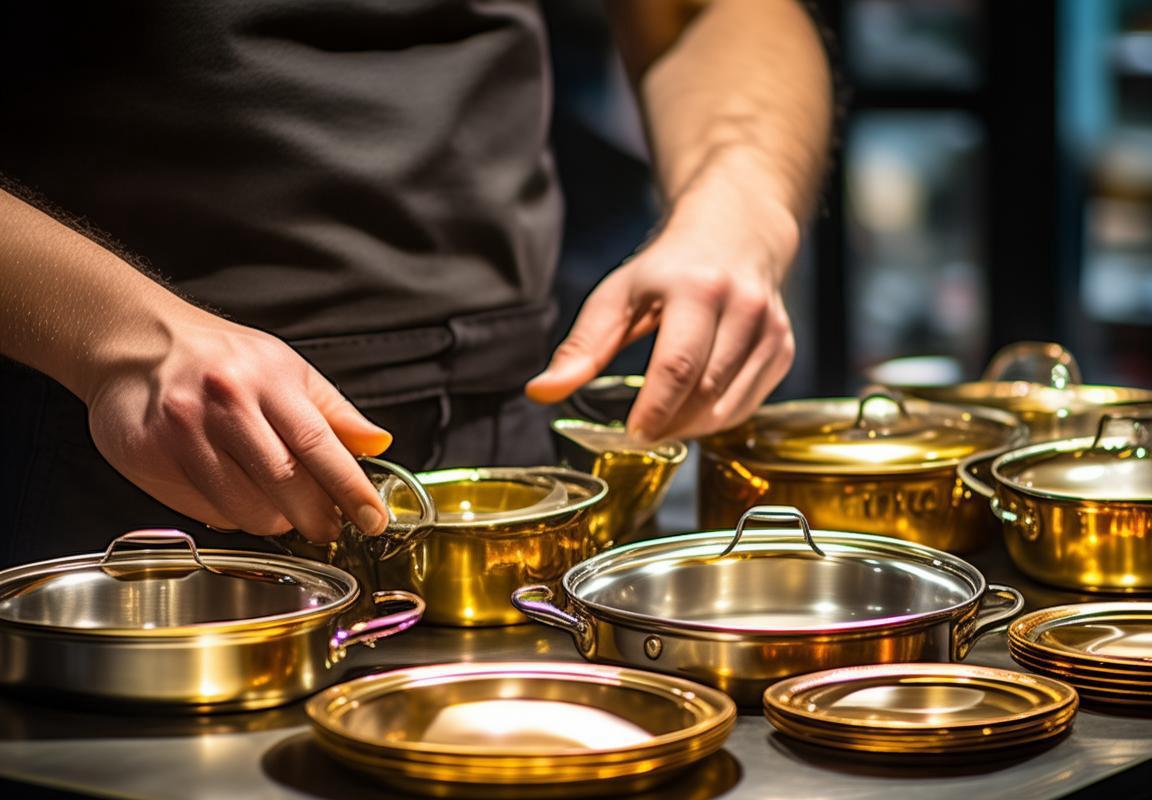
Innovation and Tradition: A Blend in Russian Kitchenware
In the realm of Russian kitchenware, a unique fusion of innovation and tradition is evident in every piece. This blend is not just a reflection of the country’s rich culinary heritage but also a testament to its evolving tastes and modern sensibilities.
The craftsmanship that goes into traditional Russian kitchenware is a labor of love, often passed down through generations. From the intricate patterns on ceramic dishes to the sturdy handles of wooden spoons, each item is a piece of art that tells a story. Yet, these items are not merely decorative; they are designed to withstand the rigors of daily cooking, a nod to the practicality that has always been a part of Russian life.
Modern innovation, on the other hand, brings a fresh perspective to age-old traditions. High-tech materials are now used to create kitchenware that is both durable and stylish. Non-stick coatings, for instance, have made cooking easier and more efficient, while still maintaining the rustic charm of traditional cookware. The use of eco-friendly materials also reflects a growing awareness of sustainability in the kitchenware industry.
One cannot talk about Russian kitchenware without mentioning the iconic samovar. Once a staple in every Russian household, this copper tea urn has evolved to incorporate modern design elements. While the traditional samovar remains a symbol of hospitality and warmth, contemporary versions are sleeker and more energy-efficient, appealing to a new generation of tea enthusiasts.
The same can be said for the familiar babushka (grandmother) pattern, which has been reimagined for modern kitchenware. Once found only on porcelain and glass, this distinctive design now graces everything from cutting boards to oven mitts, offering a touch of nostalgia with a contemporary twist.
Innovation also extends to the manufacturing process. Russian manufacturers are constantly seeking new ways to improve their products, whether it’s through the introduction of new technologies or the development of unique materials. For example, some companies are experimenting with ceramic glazes that not only enhance the aesthetic appeal of their products but also improve their durability and resistance to thermal shock.
Despite these advancements, the essence of Russian kitchenware remains rooted in tradition. The quality of the materials used is paramount, with manufacturers often sourcing locally to ensure the highest standards. The attention to detail in the design and construction of each piece is a testament to the pride and care that goes into creating these items.
The balance between innovation and tradition is also evident in the way Russian kitchenware is marketed and sold. Distributors and retailers often display their products in a manner that celebrates their heritage, while also highlighting their contemporary features. This approach caters to both the nostalgic customer who seeks a connection to the past and the modern consumer looking for cutting-edge kitchen solutions.
Russian kitchenware is not just about the items themselves; it’s about the experience they offer. Each piece is a conversation starter, a way to share stories and traditions over a meal. Whether it’s a rustic wooden bowl or a sleek, modern saucepan, these items are designed to bring people together, fostering a sense of community and connection.
In conclusion, the blend of innovation and tradition in Russian kitchenware is a dynamic and evolving narrative. It’s a story of heritage, craftsmanship, and modernity, all seamlessly woven together to create a product that is both timeless and relevant. This fusion is not just a reflection of the past; it’s a look into the future, where the spirit of tradition continues to inspire new ideas and designs.
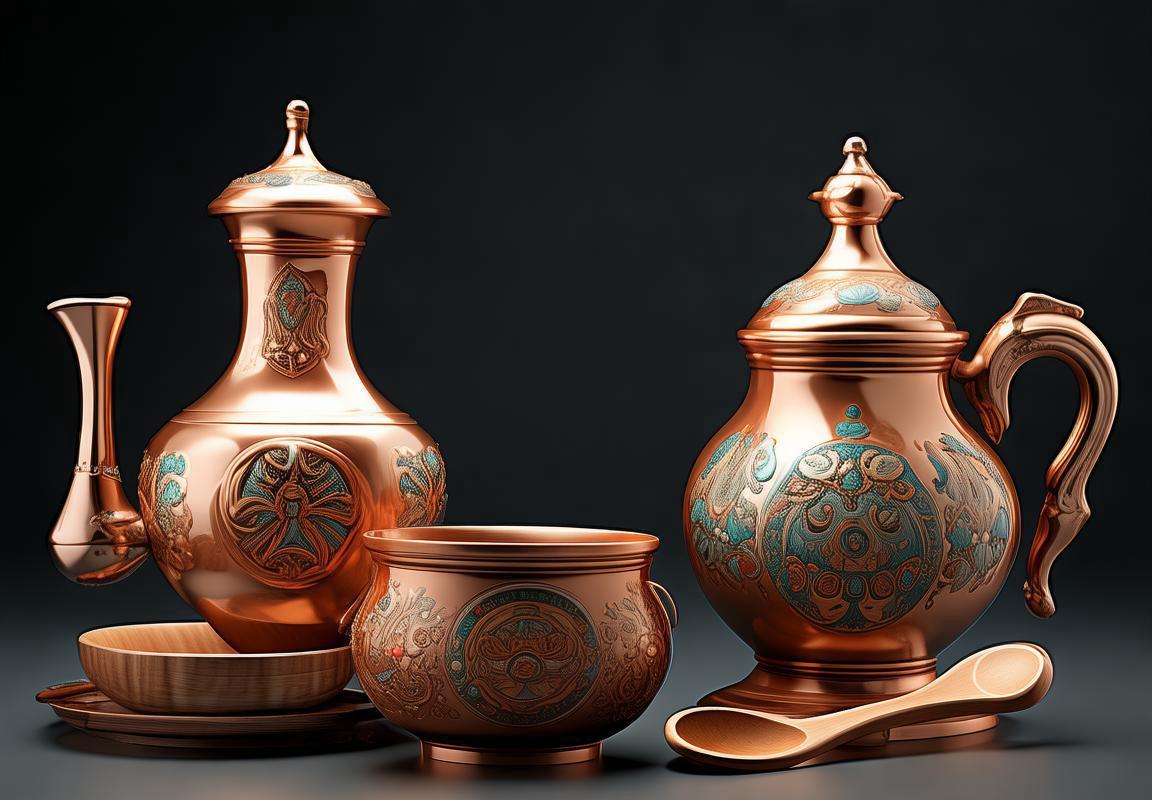
The Impact of Russian Kitchenware on Culinary Experiences
In the realm of culinary experiences, Russian kitchenware plays a pivotal role, shaping not just the presentation of dishes but also the very essence of the gastronomic journey. The impact of this distinctive collection of utensils and dishes is profound, influencing both the preparation and enjoyment of meals.
The weight of a cast-iron skillet can ground a dish with a rustic charm, while the delicate patterns on a porcelain serving bowl can elevate a simple salad to an art form. Russian kitchenware is not just a set of tools; it is a reflection of the country’s rich culinary heritage and its commitment to tradition.
The robust, often handcrafted designs of Russian kitchenware are a testament to the craftsmanship that underpins the nation’s culinary culture. From the sturdy handles of wooden spoons to the intricate details on ceramic plates, each piece tells a story of skill and dedication. This emphasis on craftsmanship means that every time a dish is served or cooked, there’s a sense of the artisan’s touch in every bite.
When it comes to cooking, Russian kitchenware often includes essentials like the iconic matryoshka (nesting dolls) cookie cutters, which might seem whimsical but are a nod to the country’s love for intricate designs and patterns. These shapes are used to create beautiful cookies and pastries, adding a visual appeal that is as much a part of the meal as the flavors.
The impact of Russian kitchenware extends to the way food is seasoned and cooked. The generous use of wooden boards for chopping and slicing not only protects the delicate blades of knives but also adds a natural scent to the food, infusing it with a warm, earthy essence. The rustic charm of a copper kettle brings a sense of nostalgia to the preparation of tea, while the weight and balance of a Russian cast-iron pot ensure even heat distribution, making it ideal for slow-cooked dishes like borscht or stew.
The presentation of food is equally important, and Russian kitchenware offers a wide array of options to showcase dishes. The traditional matryoshka porcelain, with its colorful designs, adds a splash of cheer to any table setting. The ornate details on serving bowls and platters can transform an everyday meal into a celebration, emphasizing the importance of communal dining and the joy of sharing food with others.
The culinary experiences influenced by Russian kitchenware are not limited to traditional recipes. The versatility of these tools allows for experimentation and innovation. Chefs and home cooks alike can use the robustness of cast-iron cookware to achieve deep, complex flavors, or the delicate patterns on ceramic dishes to create an aesthetically pleasing dish that complements modern culinary trends.
The cultural significance of Russian kitchenware cannot be overstated. It is not merely a collection of tools but a symbol of the country’s identity and history. The ornate designs often feature motifs inspired by nature, folklore, and the country’s vast geography, from the delicate snowflake patterns on glassware to the bold, geometric motifs on ceramic plates.
In the realm of culinary experiences, the impact of Russian kitchenware is felt not just in the food itself but in the entire dining experience. It is a bridge between the past and the present, connecting the timeless traditions of Russian cuisine with the dynamic world of contemporary cooking. Each dish prepared and served with Russian kitchenware is an opportunity to honor the past while embracing the future, a culinary journey that is as much about taste as it is about the story behind every bite.
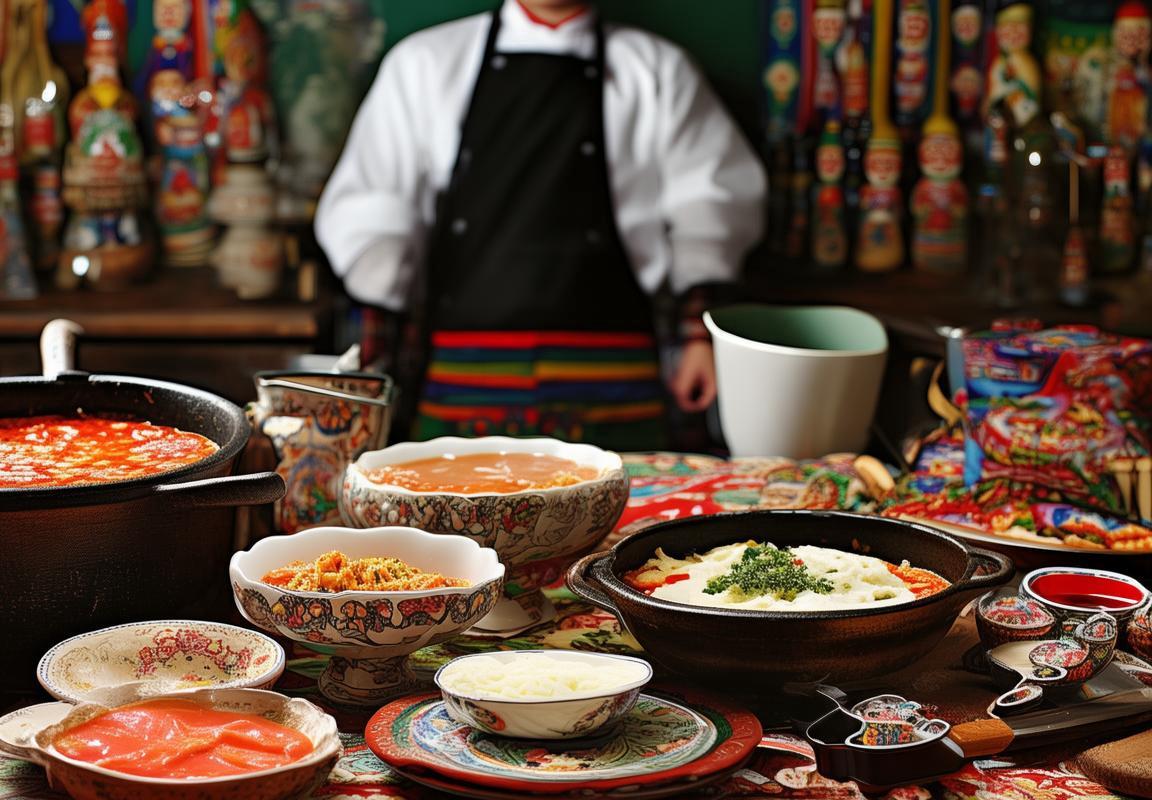
The Future of Russian Kitchenware Distribution
The distribution landscape for Russian kitchenware is ever-evolving, shaped by both the domestic market’s needs and the global culinary trends. As we delve into the future, several key factors are poised to redefine the path of Russian kitchenware distribution.
Technological advancements are not just revolutionizing consumer goods but also the distribution channels for kitchenware. E-commerce platforms are becoming more sophisticated, offering customers a wider range of products with detailed descriptions and high-quality images. This shift allows distributors to reach a broader audience without the constraints of physical store locations.
Sustainability is gaining traction, and the future of Russian kitchenware distribution will likely see a greater emphasis on eco-friendly materials and production processes. Distributors who can adapt by offering sustainable options are not only appealing to environmentally conscious consumers but are also setting themselves apart in a crowded market.
The globalization of food culture means that Russian kitchenware, with its unique designs and traditional craftsmanship, has the potential to become a sought-after export. Distributors who can tap into this trend by offering a blend of local and international products may find new markets opening up around the world.
Collaborations with local artisans and manufacturers are becoming more common, as distributors seek to ensure that their products are both authentic and of high quality. These partnerships not only help maintain the integrity of traditional Russian designs but also foster a sense of community and support for local businesses.
Customization is another area where Russian kitchenware distribution might see growth. As consumers become more discerning, there’s a growing demand for personalized items that reflect individual tastes or cultural heritage. Distributors who can provide this level of service may find a niche market that values uniqueness and craftsmanship.
The integration of digital technologies into the supply chain is streamlining operations and reducing costs. From inventory management to logistics, advanced software solutions are making it easier for distributors to keep track of their products and ensure timely delivery. This efficiency is crucial for staying competitive in an increasingly fast-paced market.
The role of social media and influencer partnerships cannot be overstated. Distributors who understand the power of social proof and can leverage influencers to showcase their products are likely to see increased visibility and sales. Influencers can help bridge the gap between traditional marketing methods and the digital age.
As the world becomes more interconnected, cultural exchanges are becoming more frequent. This cultural exchange can lead to the fusion of culinary traditions, and Russian kitchenware could play a significant role in this fusion. Distributors who are able to adapt and offer a range of products that cater to these cross-cultural dishes will have a competitive edge.
The importance of storytelling in marketing cannot be ignored. Distributors who can share the stories behind their products, whether it’s the history of a particular design or the craftsmanship involved, are more likely to connect with consumers on an emotional level. This narrative approach can be a powerful tool for building brand loyalty and fostering a sense of connection with the product.
The future of Russian kitchenware distribution also hinges on the ability to navigate regulatory changes. As new standards and certifications emerge, distributors must stay informed and adapt to ensure compliance. This could mean investing in certifications that are recognized both domestically and internationally.
Lastly, the future of Russian kitchenware distribution will depend on the ability to anticipate and adapt to changes in consumer preferences. As tastes evolve, distributors must be agile enough to pivot their offerings accordingly. This may involve keeping an eye on emerging trends, such as the popularity of plant-based diets, and ensuring that their product lines can cater to these shifts.
In conclusion, the future of Russian kitchenware distribution is bright but requires a forward-thinking approach. By embracing technological advancements, sustainability, cultural exchanges, and the power of storytelling, distributors can not only maintain their position in the domestic market but also expand their reach globally.
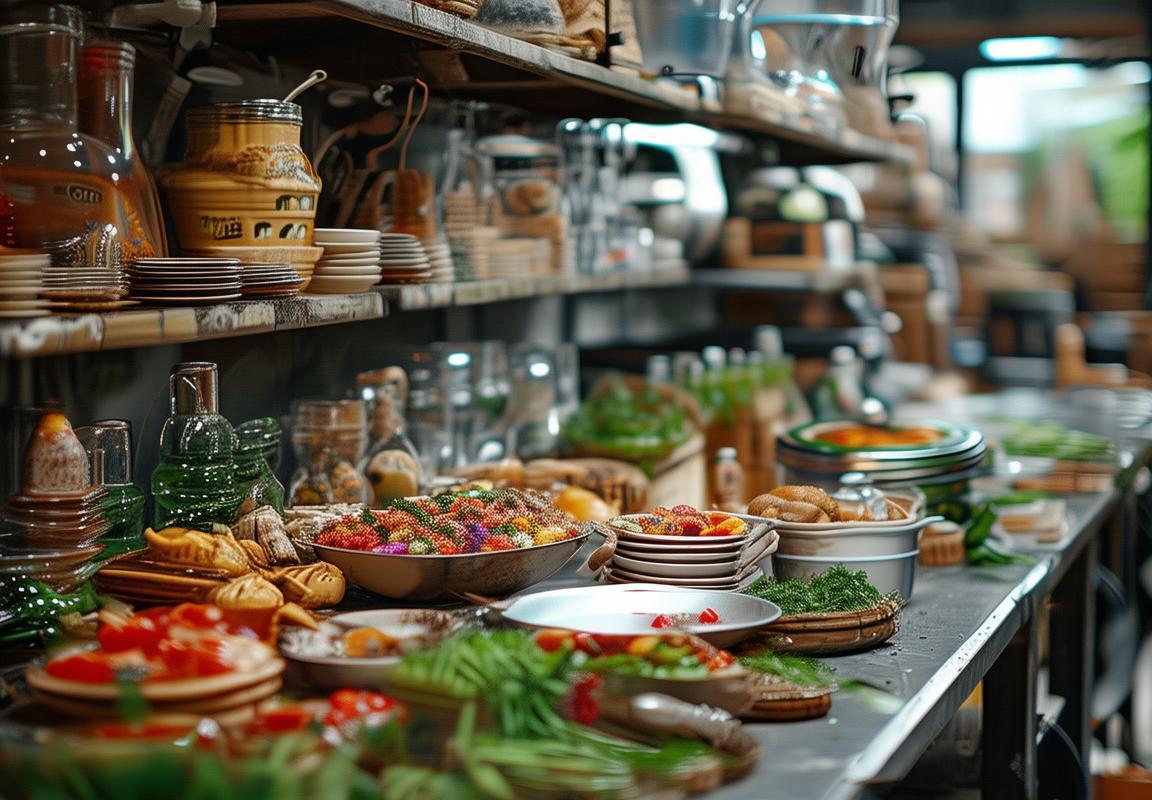
How to Partner with a Russian Kitchenware Distributor
Navigating the Russian market can be daunting, but forming a partnership with a local kitchenware distributor can open doors to a rich tapestry of opportunities. Understanding the landscape and the steps to establish a successful collaboration is key. Here’s how you can embark on this journey:
-
Research the MarketBefore diving into partnerships, it’s crucial to have a solid understanding of the Russian kitchenware market. Look into the trends, consumer preferences, and the competitive landscape. Russian consumers value quality, durability, and often a touch of tradition in their kitchenware.
-
Identify Your NicheDetermine what type of kitchenware you want to distribute. Is it high-end, traditional, or perhaps eco-friendly products? Knowing your niche will help you find a distributor who specializes in similar products or markets.
-
Attend Trade Shows and ExposRussia hosts several trade shows and expos that bring together manufacturers, distributors, and retailers from across the country. These events are excellent opportunities to network, showcase your products, and meet potential distributors.
-
Establish ContactOnce you’ve identified a distributor you’re interested in, reach out through email or phone. Be clear about your intentions and the products you represent. A well-crafted introduction can make a significant difference.
-
Understand the Distributor’s CapabilitiesBefore committing to a partnership, assess the distributor’s current portfolio. Do they already carry similar products? Can they provide the market reach and expertise you need? A distributor’s reputation and customer service are vital.
-
Discuss Distribution StrategyEngage in detailed discussions about how your products will be distributed. This includes logistics, pricing, and marketing strategies. A distributor should be willing to tailor their approach to fit your brand and product offerings.
-
Review Contract DetailsOnce both parties agree on the terms, carefully review the contract. Ensure that it covers all aspects of the partnership, including exclusivity, territory, minimum order quantities, and payment terms. Don’t hesitate to negotiate if necessary.
-
Build a Strong RelationshipA successful partnership is built on trust and mutual respect. Regular communication is key. Keep the lines open for feedback, address any concerns promptly, and be open to adapting your strategy as needed.
-
Market Your Products TogetherWork with your distributor to create a marketing plan that leverages their local knowledge and your product expertise. This could involve social media campaigns, attending local events, or even creating joint promotional materials.
-
Monitor PerformanceRegularly review the performance of your products in the market. Monitor sales figures, customer feedback, and market trends. This will help you identify areas for improvement and ensure that both parties are meeting their goals.
-
Be Prepared to AdaptThe Russian market is dynamic and can be influenced by a variety of factors, including economic changes and cultural shifts. Be prepared to adapt your strategy to these changes and maintain flexibility in your approach.
-
Celebrate SuccessesRecognize and celebrate milestones together. Whether it’s reaching a sales target or expanding into a new region, positive reinforcement can strengthen your partnership.
-
Continuous ImprovementAlways seek ways to enhance the partnership. This could involve introducing new products, exploring additional markets, or even co-developing products that align with both your brands’ values.
-
Long-Term VisionMaintain a long-term vision for your partnership. While immediate results are important, a successful relationship is built on sustainable growth and shared aspirations.
-
Be Patient and PersistentFinally, be patient and persistent. Building a strong partnership takes time and effort. It’s a journey that requires dedication and a willingness to learn from both successes and setbacks. With the right approach, your partnership with a Russian kitchenware distributor can be a rewarding venture.

Conclusion: Nurturing the Russian Culinary Heritage
In the heart of Russia, culinary traditions are woven into the fabric of daily life, and the kitchenware that adorns Russian kitchens reflects a blend of innovation and deep-rooted heritage. From the sturdy cast-iron pots that simmer hearty stews to the delicate porcelain teacups that carry the essence of tea culture, each piece tells a story of craftsmanship and functionality. The impact of Russian kitchenware on culinary experiences is profound, shaping the way dishes are prepared and enjoyed, and ensuring that the flavors of Russia resonate in every bite.
The aesthetic appeal of Russian kitchenware is as captivating as its practicality. Patterns etched onto glassware and ceramics, often with intricate designs inspired by folklore and nature, are not just decorative; they are a testament to the country’s rich cultural history. These designs are a part of the storytelling that happens around the table, where each pattern and color evokes a memory or a story, adding layers of meaning to the meal.
The quality of the materials used in Russian kitchenware is another key factor in its impact. High-grade metals, fine porcelain, and robust wooden handles are chosen not just for their durability but also for their ability to enhance the cooking process. For instance, the weight and heft of a cast-iron skillet are perfect for slow-cooked dishes, distributing heat evenly and locking in flavors. The fine porcelain of a Russian tea set is not only delicate but also resistant to thermal shock, ensuring that delicate teas are served at the right temperature.
Russian kitchenware also plays a role in the communal aspect of dining. The presence of large, round tables, often with intricate carvings, encourages gatherings and fosters a sense of community. The use of shared utensils and serving platters is a reflection of the importance of togetherness in Russian culture. The act of eating together is not just about sustenance; it’s about the exchange of stories, laughter, and the strengthening of bonds.
The culinary experiences shaped by Russian kitchenware are often deeply rooted in the country’s diverse geography and climate. In the cold winters, hearty soups and stews are a staple, with kitchenware designed to withstand the rigors of slow, low-heat cooking. In the warmer months, lighter dishes are served, with the same attention to detail and craftsmanship evident in the serving pieces.
The global culinary landscape has also been influenced by Russian kitchenware. Chefs around the world have taken inspiration from the designs and materials used in Russian kitchenware, incorporating them into their own recipes and presentations. The rustic charm of a hand-painted ceramic bowl or the warmth of a wooden spoon can bring a touch of Russia to international cuisine.
The legacy of Russian kitchenware is not just in the products themselves but in the stories they carry. Each piece is a reminder of the country’s past, the hands that crafted it, and the traditions it represents. The impact of Russian kitchenware on culinary experiences is far-reaching, influencing both the way food is prepared and the memories that are created around the table.
As the world continues to embrace diverse culinary traditions, the future of Russian kitchenware distribution lies in its ability to adapt while maintaining its core values. There is a growing demand for authentic, high-quality kitchenware that reflects the craftsmanship and heritage of Russian culture. Distributors must navigate the balance between preserving traditional methods and embracing modern trends, ensuring that the next generation of chefs and home cooks can experience the full depth of Russian culinary heritage through their kitchenware.
To nurture this heritage, distributors must also focus on education and promotion. By sharing the stories behind each piece, they can deepen the appreciation for Russian kitchenware and its place in the global culinary scene. Collaboration with local artisans and the use of sustainable materials are also crucial in maintaining the integrity of the products while considering the environmental impact.
In conclusion, the impact of Russian kitchenware on culinary experiences is a tapestry woven from tradition, innovation, and cultural exchange. It is a reflection of the rich tapestry of Russian life, a testament to the craftsmanship that has been passed down through generations, and a bridge that connects the past with the present, inviting the world to partake in the flavors and stories of Russia.